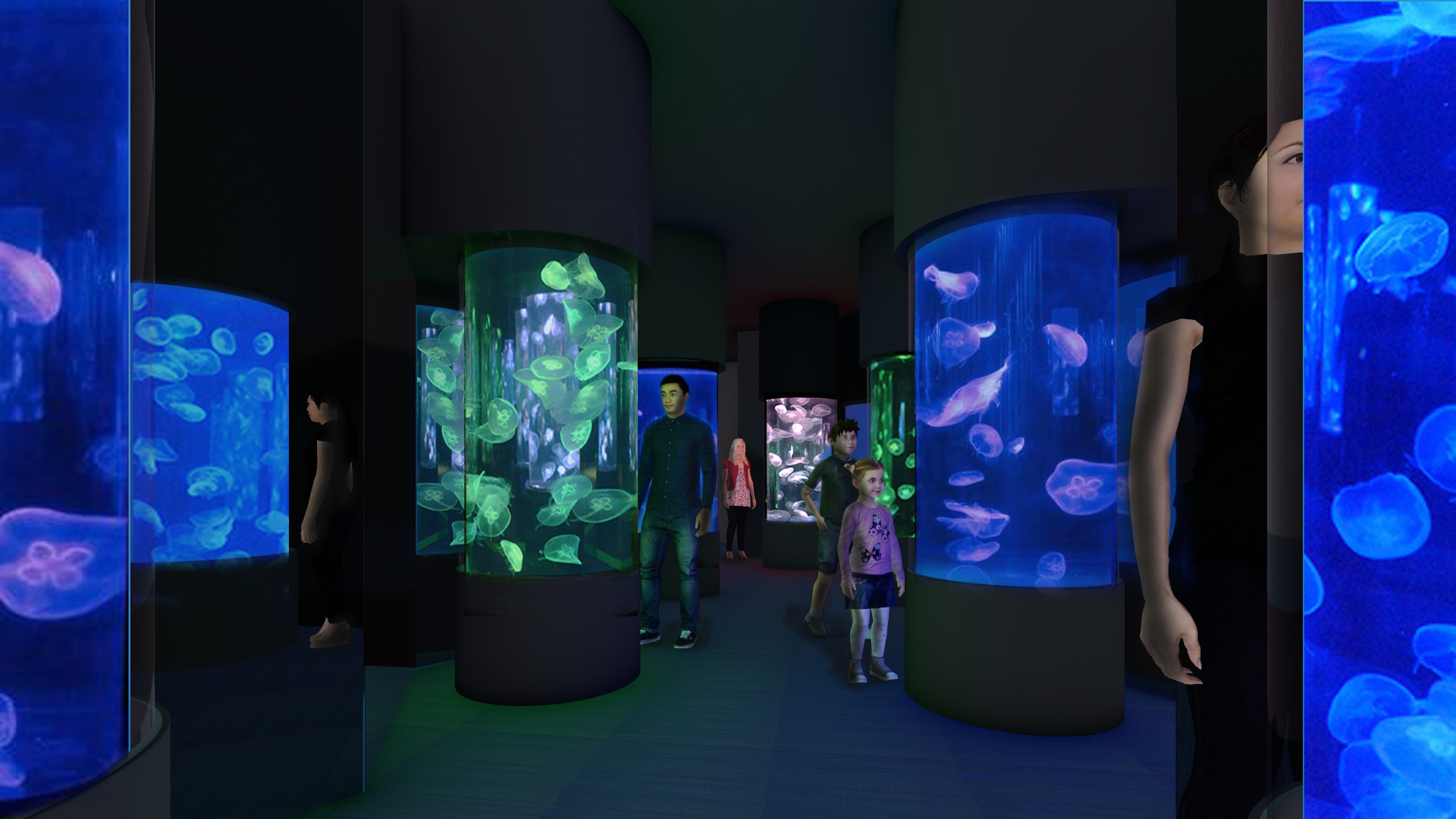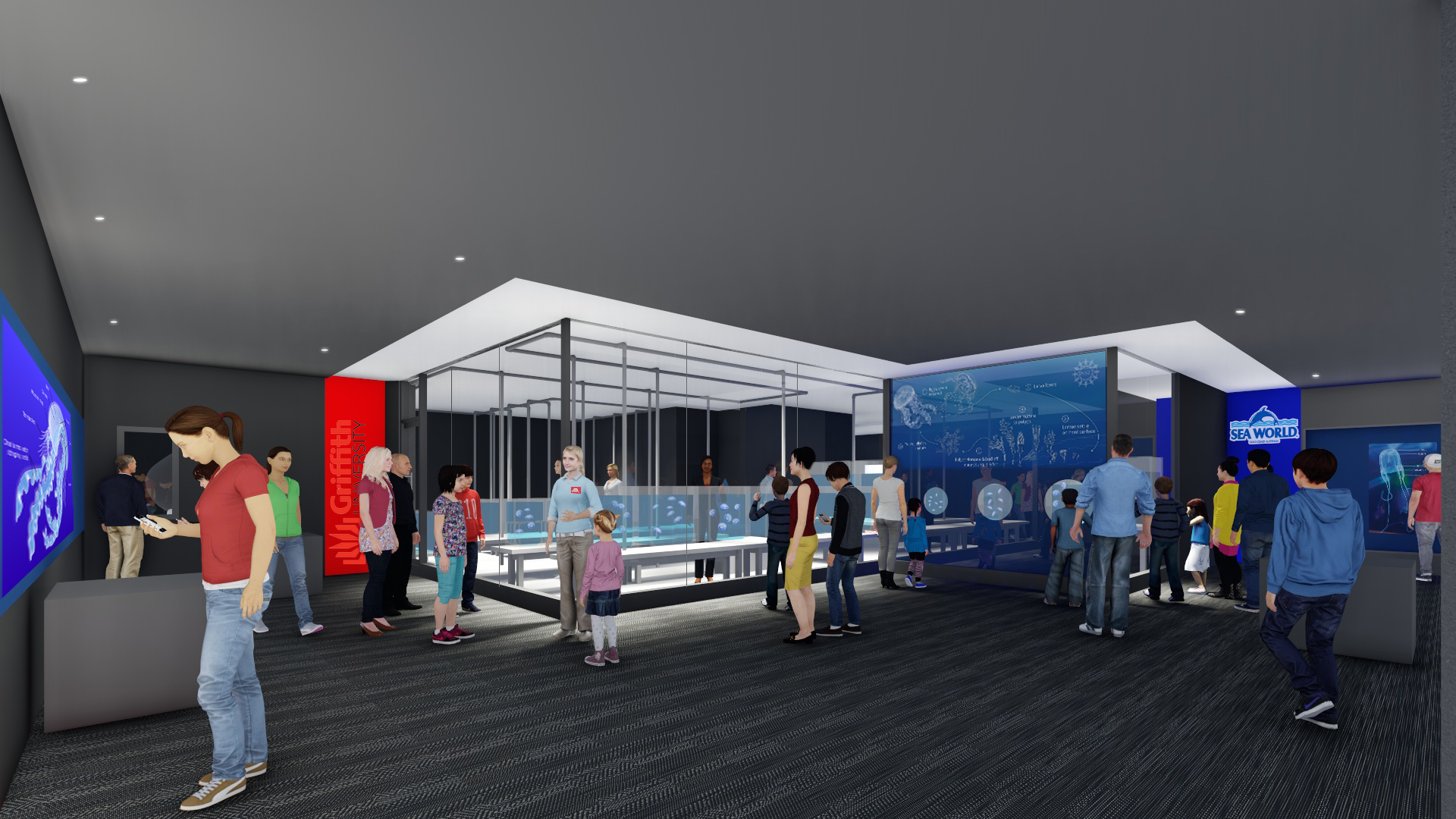Griffith University has partnered with Sea World to expand its research calibre and increase public awareness on marine conservation issues.
Bringing the beauty and wonder of sea jellies to life with the announcement of the Sea Jellies Illuminated exhibit opening at the marine-park in April 2018, the exciting partnership will include a first-of-its-kind working research laboratory.
The mesmerising Sea Jellies Illuminated will feature an array of sea jelly displays and educational elements to take Sea World guests on an illuminating journey as they delve into the fascinating underwater world of these aquatic animals.

Guests will get a first-hand look at Griffith University students undertaking research in the lab and learn about the vital efforts marine researchers are making to protect not just sea jellies but the wider marine environment.
Griffith University Senior Deputy Vice Chancellor Ned Pankhurst said not only would the partnership encourage students into marine science and biology degrees, it would enhance Griffith’s research capabilities.
“This exciting partnership provides substantial expansion of our research infrastructure and a demonstrable commercial impact of our work that will ultimately lead to increased public education and awareness of the important work undertaken by both organisations,” he said.
The exhibit will house a variety of local Australian species such as Cyanea the Lion’s Mane, Catostylusthe Blue Blubber, Cassiopea Upside Down jellies and Irukanji, of which polyps are currently being cultured in Griffith School of Environment labs.

Lead researcher Associate Professor Kylie Pitt said the new lab would not just be limited to sea jelly research currently undertaken by her team.
“Researchers will have access to the Sea World boats and the infrastructure at Sea World, and in return we’ll be able to collaborate and work alongside their team to develop innovative solutions to maximise Sea World’s conservation efforts,” she said.
“Watching researchers has never been done in an aquarium before so this will be the first and best sea jelly research lab in the world. The public will be able to see what research dollars are being spent on and hopefully this will encourage more people to learn about environmental issues.”
Sea World Director of Marine Sciences Trevor Long said the fascinating exhibit would provide greater public awareness and education about a varying species of jellies.
“Sea Jellies rank among the most fascinating creatures of the sea and this exhibit will provide guests with an opportunity to get an up-close look at the incredibly interesting species,” he said.
“We have also partnered with Surf Life Saving Queensland on this exhibit which will enable us to educate guests about symptoms of stings and what to do if stung while using the marine environment.”
Surf Life Saving Queensland Chief Operating Officer, George Hill ESM said the exhibit is an unprecedented opportunity to educate the public on safe co-existence with marine jellies in their environment.
“There are a lot of myths and misconceptions surrounding sea jellies and treatment, and an opportunity to educate the public on sting prevention, the right treatment and more importantly identifying dangerous species like Irukandji, is vital to our vision at SLSQ,” he said.
For information and to stay up-to- date with the exhibit please visit Sea World’s website.
Find out more about studying marine science at Griffith University.
